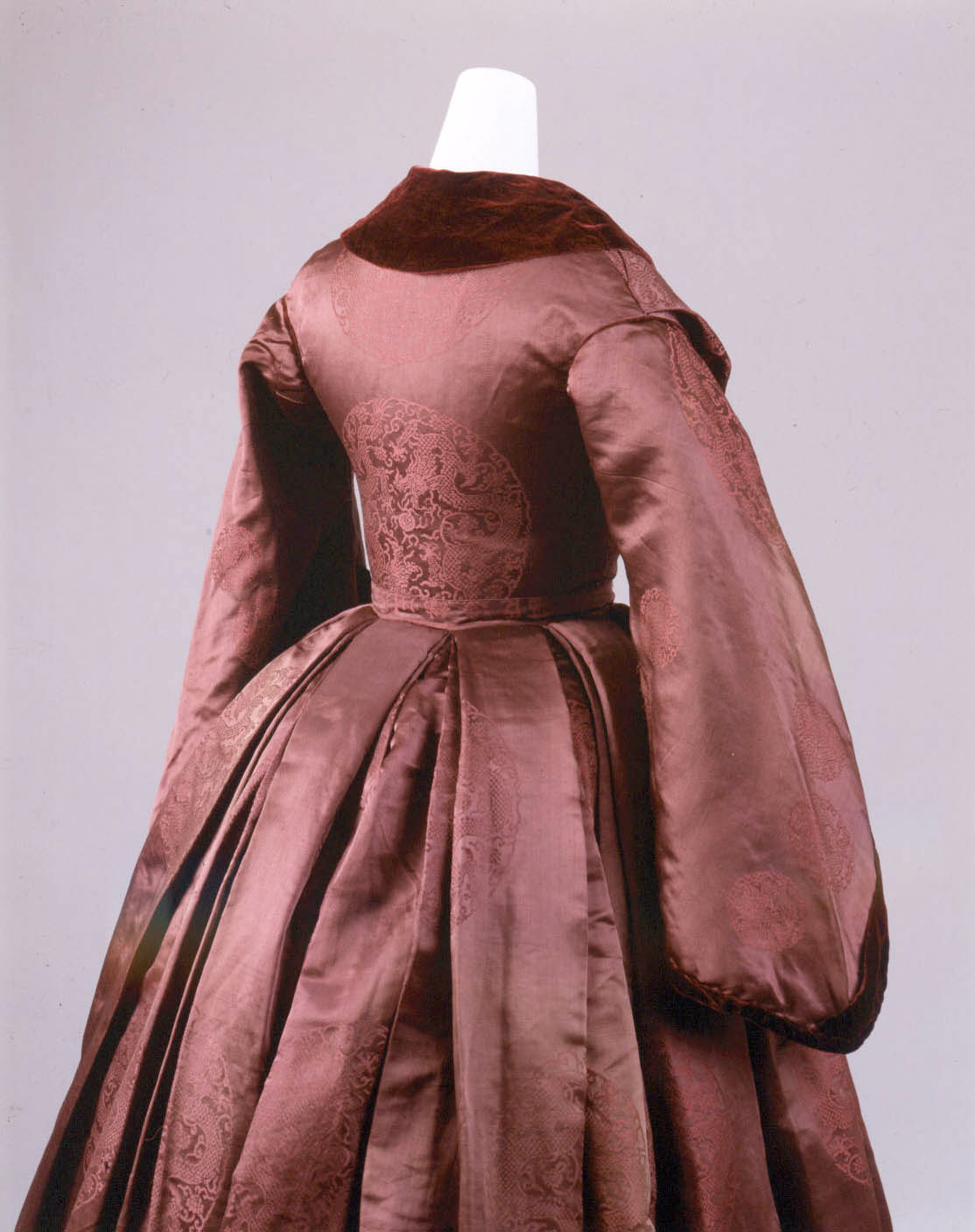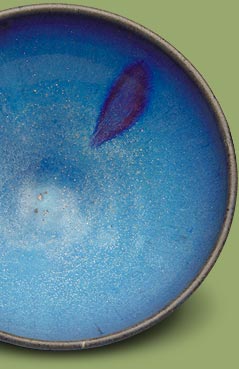Kung Fu Monks
Don't Get a Kick
Out of Fighting
Famous Temple Spurns
Beijing Games, Sparking
Trash Talk From Rivals
By GEOFFREY A. FOWLER and JULIET YE
December 14, 2007; Page A1
Kung fu master Shi Dechao can swing his 22-pound "monk's spade," an ancient Chinese shovel, like a majorette twirling a baton. His lightning punches, in a style the ancients called Iron Fist, generate a thunk! straight out of kung fu movie sound effects. A powerful grunt punctuates his routine.
But Dechao, and most of the other martial monks at the 1,500-year-old Shaolin Temple in China's central Henan province, decline to join in one of the biggest kung fu battles of modern times -- a competition to be staged in tandem with next year's Olympic Games in Beijing.
![[Shi Yongxin]](http://s.wsj.net/public/resources/images/HC-GL159_Shi_20071214001019.jpg)
Clad in saffron Buddhist robes, Dechao insists that real kung fu monks don't fight. They meditate and practice kung fu to reach enlightenment. "Every fist contains my love," says the 39-year-old Dechao, also known as Big Beard.
The Shaolin Temple's decision to stay out of the competition, to be held at the same time as the Olympics and passing out medals of its own, made headlines in China. And it has rekindled a disagreement familiar from the movies: Is kung fu a form of devotion, a style of fighting or both?
Zen Buddhism and kung fu have long made an unlikely pair. As legend has it, Zen's founder, an Indian missionary to China named Bodhidharma, worried that too much seated meditation would make monks flabby. So he taught the monks in Shaolin a set of 18 exercises codified as "Yi Jin Jing," or "Muscle Change Instruction," many of them based on animal movements.
|
WSJ's Geoffrey Fowler reports that the Chinese government wants to promote kung fu as a sport in the Olympics. But, the famous monks of the Shaolin Temple refuse to fight. |
"Kung fu is Zen practice in motion," says Shi Yongxin, the abbot of Shaolin, sitting in his office next to a sculpture of a meditating Buddha. When he moved to the temple from a devoutly Buddhist family in 1981, Yongxin learned to add kung fu moves to his meditation.
Over the centuries, the otherwise peaceful monks have occasionally used their physical prowess in battle to defend the temple and its allies. But they didn't always like it. In lore, the monks went to battle only when they were facing a life-or-death crisis and had no alternative.
Now, a debate over the Olympics has transported the classic kung fu monk's fight-or-pray dilemma to the 21st century.
For the Games, the Chinese have backed a committee-regulated version of kung fu split into two competitions. One, dubbed taolu, is a sort of rhythmic gymnastics in fast-forward. Individual athletes are scored on the "power, harmony, rhythm, style and musical accompaniment" of their routines, which have names such as Lotus Kick and Dragon's Dive to the Ground. A second form of kung fu competition, called sanshou, involves fighting -- and a fair amount of protective padding. Kung fu itself is also known as wushu.
![[Wushu]](http://s.wsj.net/public/resources/images/AH-AC401_WUSHU_20071213150603.jpg) |
Justin Guariglia |
Today, kung fu is practiced by more than 60 million Chinese and millions more around the world. |
At the International Wushu Federation's Ninth World Wushu Championships in Beijing last month, fighter Zhang Yong entered the ring to chants of "Go for it, China!" He won the gold medal in the 65-kilogram (143-pound) combat competition by striking his Russian opponent with a fierce combination of kicks and punches, at one point flipping the Russian into the air.
"Sometimes I get hurt during the training," says the 24-year-old Mr. Zhang, a Muslim, pointing to a scab on his right eyebrow. Yet "wushu is something that starts with fighting and ends with spirit," he says. "This spirit isn't a religious concept, but rather love to the nation."
To the monk Dechao, the spirit, or qi, in Shaolin Buddhism is embodied in breathing, not force. "I can practice kung fu internally while drinking tea quietly with my friends," he says.
After the abbot publicly distanced Shaolin from the Olympics in October, Chinese bloggers and athletes began to suggest the monks are just scared they wouldn't win. At the competition, athletes said their sport was simply not comparable to Shaolin meditation.
"We are the best wushu competitors," says Ma Lingjuan, the 21-year-old Chinese world champion in taolu. She has been practicing spinning and jabbing a spear since she was 10. "Our goal is the medal," she says. "The monks in the temple do it as a hobby."
Yongxin, the abbot, says monks practice kung fu "with an understanding of Zen Buddhism and love of the temple. On the other hand, the athletes use wushu as a way to find honor. It is easy to tell which one is more sustainable and deep."
Whether with blows or rhetoric, it seems, everybody is kung fu fighting.
Controlling Kung Fu
The government's efforts to standardize the diverse practice of kung fu were also designed to control it. After China's 1949 revolution, the Communist Party at first promoted martial arts but eventually grew leery of kung fu as a subversive self-defense practice.
![[Kung Fu]](http://s.wsj.net/public/resources/images/P1-AJ878_WUSHUJ_20071213201511.jpg) |
Fighters at Wushu championship in Beijing in November, and monk Shi Dechao (inset) |
During the Cultural Revolution of the '60s and '70s, the Red Guards attacked the Shaolin Temple and other religious orders. By the early 1980s, after centuries of unbroken master-to-student lineage, only a dozen or so monks lived at Shaolin. Outside the temple, though, traditional kung fu schools, not all of them associated with Buddhism, thrived.
'Chopsocky' TV
In the 1970s and 1980s, a blizzard of "chopsocky" TV shows and films, such as the 1982 Jet Li film "Shaolin Temple," helped to sear the Buddhist legends into the popular imagination, both in China and abroad.
The 1970s American TV show "Kung Fu" featured David Carradine as Kwai Chang Caine, a Shaolin monk who travels through the Old West armed only with his kung fu. In flashback scenes to the temple, his master teaches him to "avoid rather than check. Check rather than hurt. Hurt rather than maim. Maim rather than kill."
Today, kung fu is practiced by more than 60 million Chinese and millions more around the world -- and its purpose remains a topic of debate.
"The Shaolin Temple is only a building," says Kang Gewu, the secretary general of the Chinese Wushu Association. He points out that martial arts had existed in China for centuries before the Shaolin temple began practicing kung fu. He adds: "In our mind, wushu is a sport, not a religious practice."
It can be both. The town around Shaolin is home to dozens of wushu schools, some employing monks from the temple who accept as students both the spiritually and competitively inclined.
Meeting Place of Paradox
"Shaolin is a meeting place of paradox -- tourism, Zen, military, sports, communism, martial arts, history," says Gene Ching, the associate publisher of Kung Fu Tai Chi magazine in California. He thinks the debate between the monks and the athletes over spiritual affairs is "fairly artificial."
![[Zhang Yong]](http://s.wsj.net/public/resources/images/HC-GL158_Zhang_20071214001023.jpg)
For the temple, maintaining its image as the capital of kung fu is about both expanding its reach and paying its bills. Yongxin, who has been dubbed the "CEO abbot" in the press, has installed a spectacle of his own: a one-hour stage show featuring music by "Crouching Tiger, Hidden Dragon" composer Tan Dun and the kung fu skills of hundreds of back-flipping students. Tickets cost $32.
Even as he distances himself from Olympic competition, "the abbot keeps this stereotype alive that kung fu is about fighting," says Justin Guariglia, a photographer who spent several years getting to know the monks and recently published a book, "Shaolin: Temple of Zen." The "real monks," he notes, are kept far away from the tourists.
The abbot, periodically checking his cellphone during an interview, said the temple doesn't actually make that much money from the tourist activities. "What we have done is spread Buddhism and its spirit of universal love," he said.
Another monk at Shaolin, named Bodhidharma after the Indian missionary, dismisses suggestions that the monks don't want to play because they are afraid they would lose.
"Oh, lord," laughs Bodhidharma, who lives in Malaysia and visits the temple to meditate from time to time. "Monks have a very kind and patient heart. We could win that. But we don't want to hurt anybody."
--Sue Feng contributed to this article.
Write to Geoffrey A. Fowler at geoffrey.fowler@wsj.com and Juliet Ye at juliet.ye@wsj.com
|  I was delighted that Emlyn found these photos after reading my post on Daoist Shoes. There is no evidence that they were used by Daoists in ritual. But the more orthodox the ritual, the more private it is, so we will never know. But the shoes are used in theater and were widely worn by Manchu women.
I was delighted that Emlyn found these photos after reading my post on Daoist Shoes. There is no evidence that they were used by Daoists in ritual. But the more orthodox the ritual, the more private it is, so we will never know. But the shoes are used in theater and were widely worn by Manchu women.

 George Xu used to tell us stories about the Wild East. Often he was a character in these stories, and honestly I think they were true stories, but more often than not he seemed to be the cowboy with the white hat. (He was the good guy in morality tales that may or may not have been so black and white.)
George Xu used to tell us stories about the Wild East. Often he was a character in these stories, and honestly I think they were true stories, but more often than not he seemed to be the cowboy with the white hat. (He was the good guy in morality tales that may or may not have been so black and white.)
![[Shi Yongxin]](http://s.wsj.net/public/resources/images/HC-GL159_Shi_20071214001019.jpg)
![[Wushu]](http://s.wsj.net/public/resources/images/AH-AC401_WUSHU_20071213150603.jpg)
![[Kung Fu]](http://s.wsj.net/public/resources/images/P1-AJ878_WUSHUJ_20071213201511.jpg)
![[Zhang Yong]](http://s.wsj.net/public/resources/images/HC-GL158_Zhang_20071214001023.jpg)

 I've been reading the book
I've been reading the book  had a new competition. This created a really competitive environment where everyone was making imperial quality work, but only one "kiln" was getting to sell it to the royal family so there was literally tons of extraordinary art work floating around. This milieu created the worlds first antique markets.
had a new competition. This created a really competitive environment where everyone was making imperial quality work, but only one "kiln" was getting to sell it to the royal family so there was literally tons of extraordinary art work floating around. This milieu created the worlds first antique markets. Wow, it was fun putting those three names together.
Wow, it was fun putting those three names together. Wilhelm Reich
Wilhelm Reich Reich is also extraordinary because he was probably the first to say that Nazi's and Communists are the same. His reason was also way ahead of his time: They both used the same repressive physicality to perpetuate fear of self-awareness; a fear which makes people want to be told what to do.
Reich is also extraordinary because he was probably the first to say that Nazi's and Communists are the same. His reason was also way ahead of his time: They both used the same repressive physicality to perpetuate fear of self-awareness; a fear which makes people want to be told what to do. Katherine Dunham
Katherine Dunham  I've been looking for information on Daoist ritual shoes. I was sure that somewhere I'd seen special Daoist ritual shoes which are 3 inch high stilts. These shoes make it impossible to put weight on the toes or the heel since the stilt post goes down from the center of the foot. Since the base the the stilt is thicker at the bottom, kind of like a mushroom, there is a plenty of space to balance. The problem is I have been unable to find these shoes (so no picture). Did I dream them? How embarrassing.
I've been looking for information on Daoist ritual shoes. I was sure that somewhere I'd seen special Daoist ritual shoes which are 3 inch high stilts. These shoes make it impossible to put weight on the toes or the heel since the stilt post goes down from the center of the foot. Since the base the the stilt is thicker at the bottom, kind of like a mushroom, there is a plenty of space to balance. The problem is I have been unable to find these shoes (so no picture). Did I dream them? How embarrassing. Dream or not, these shoes represent ultimate shamanic power. The symbolic steps Daoists take in ritual cover huge distances. They circumambulate the empire, the world, and they traverse the distances between stars in the sky.
Dream or not, these shoes represent ultimate shamanic power. The symbolic steps Daoists take in ritual cover huge distances. They circumambulate the empire, the world, and they traverse the distances between stars in the sky.
 There is a Daoist precept against subordination. In fact there is a precept (one of the 180 of Lord Lao) that says, "Do not serve in the military. If you must serve in the military do not serve in a subordinate position." I take this to mean join as an officer and be in a position to make decisions about life and death.
There is a Daoist precept against subordination. In fact there is a precept (one of the 180 of Lord Lao) that says, "Do not serve in the military. If you must serve in the military do not serve in a subordinate position." I take this to mean join as an officer and be in a position to make decisions about life and death.
 When a shaman purifies a space, she uses her acquired strength to forcibly evict all the ghosts and spirits that have taken up residence there. Since Daoists did not practice subordination to other entities and they were weak by precept and commitment, they didn’t actually purify the space immediately. Instead they bowed. The act of bowing is a declaration that human beings are going to temporarily use the space for meritorious actions. Bowing doesn’t scare away ghosts, or banish them. Bowing is a way of asking spirits to temporarily clear out. It is a declaration that the practice about to be performed will not be of any interest to ghosts. A ghost is an entity defined by weak, deficient, or lingering commitments.
When a shaman purifies a space, she uses her acquired strength to forcibly evict all the ghosts and spirits that have taken up residence there. Since Daoists did not practice subordination to other entities and they were weak by precept and commitment, they didn’t actually purify the space immediately. Instead they bowed. The act of bowing is a declaration that human beings are going to temporarily use the space for meritorious actions. Bowing doesn’t scare away ghosts, or banish them. Bowing is a way of asking spirits to temporarily clear out. It is a declaration that the practice about to be performed will not be of any interest to ghosts. A ghost is an entity defined by weak, deficient, or lingering commitments.